Join More Than 50,000+ Subscribers and get latest camera news and rumors
NEW CAMERA VIDEOS ON YOUTUBE
Download Our Android App
|
By admin, on May 25th, 2024
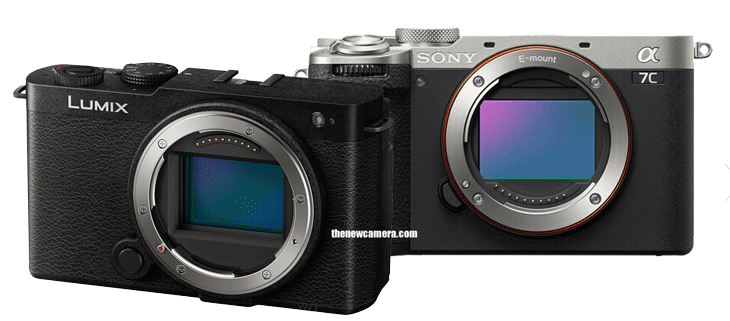
Let’s compare the Panasonic S9 versus the Sony A7C II. Starting with the comparison,
1. Sensor
we know the key difference here is the sensor resolution. Both cameras feature BSI CMOS sensors, but the Sony A7C II has a 33-megapixel Exmor R BSI CMOS sensor, whereas the Panasonic S9 uses a 24.2-megapixel sensor BSI CMOS. If we compare them side by side, the Sony A7C II will show slightly more details due to the higher-resolution sensor, specifically when you are pixel-peeping at 100% scale, as many of us do as photographers. However, the difference is minimal and not noticeable until you test both images under lab conditions.
2. AutoFocus
The autofocus sensitivity of both cameras is slightly different. The Sony A7C II’s autofocus sensitivity range is -3 EV to 20 EV, whereas the autofocus sensitivity range of the Panasonic S9 is from 0 to 18 EV., so Sony A7C II II practically more usable in low-light condition compared to the S9
3. AI integration
Regarding AI integration, the Sony A7C II camera is more advanced, with a dedicated AI chip inside it as well as dedicated AI alkgo. The autofocus capability and tracking performance of the A7C II is better compared to S9, and it can track subjects like trains, airplanes, and other moving objects. This doesn’t mean the Panasonic S9’s autofocus system is inferior or bad; it is quite good since Panasonic also uses a hybrid autofocus system. However, if you compare it with Sony, you will notice some differences. however, the S9 camera sensor is also very suitable for general-purpose photography and usage.
| Feature |
Panasonic S9 |
Sony A7C II |
| Sensor Type |
BSI CMOS |
BSI CMOS |
| Sensor Resolution |
24.2 megapixels |
33 megapixels |
| Detail Level at 100% Zoom |
Lower detail |
Higher detail |
| Autofocus Sensitivity Range |
0 EV to 18 EV |
-3 EV to 20 EV |
| AI Integration |
No dedicated AI chip |
Dedicated AI chip |
| Autofocus Capability |
Good, hybrid autofocus system |
Superior, advanced tracking performance |
| Tracking Performance |
Efficient but slightly lower than Sony |
Excellent, tracks moving objects efficiently |
| General Photography Usage |
Suitable |
Suitable |
3. Mechanical Shutter vs Electronic
Sony A7C II camera has two options: one is a mechanical shutter and the other is an electronic shutter. The Panasonic S9 remains limited to electronic only. With the help of a mechanical shutter, you get a mechanical range starting from 1/4000 of a second to 30 seconds long exposure in the Sony A7C II camera. The electronic shutter range of both cameras is the same, from 1/8000 of a second to 60 seconds. However, the Sony A7C II’s electronic shutter range limited to 1/8000 of a second to 30 seconds.
4. Continuous shooting speed
Let’s compare the continuous shooting speed with full-time autofocus support and auto exposure support. With the Panasonic S9 camera, you are able to capture approximately 30 frames per second with the help of the electronic shutter. The Sony A7C II camera’s continuous shooting speed is limited to 10 frames per second with the mechanical shutter.
5. Pre-shooting buffer
One more thing that you get with Panasonic that will help you as a photographer is a pre-shooting buffer of approximately 0.50 seconds, which effectively counts 15 frames per second in the Panasonic S9 camera, which is absent in the Sony A7C II.
6. Pixel Shift High-Resolution Mode
Advantages associated with the Panasonic S9 camera include sensor-shift high-resolution mode. With the Panasonic S9 camera, you can capture 96-megapixel high-resolution images while using this mode, but there is one condition: you have to place your camera on a tripod, and the subject should be still.
Being a Panasonic camera, you also get some abilities of post-focus mode, so you can change the focus point after taking a shot, but all these facilities are only available in RAW files, not available in JPEGs.
| Feature |
Panasonic S9 |
Sony A7C II |
| Shutter Options |
Electronic only |
Mechanical and electronic |
| Mechanical Shutter Range |
Not available |
1/4000 sec to 30 sec |
| Electronic Shutter Range |
1/8000 sec to 60 sec |
1/8000 sec to 30 sec |
| Continuous Shooting Speed |
30 fps (electronic shutter) |
10 fps (mechanical shutter) |
| Pre-Shooting Buffer |
Yes, 0.50 seconds (~15 fps) |
No |
| High-Resolution Mode |
Yes, 96 megapixels (requires tripod and still subject) |
No |
| Post Focus Mode |
Yes (RAW files only) |
No |
7. Display
Sony A7C Mark II camera features an electronic viewfinder of 0.39 inch OLED, 2.36 million resolution, whereas the electronic viewfinder is completely absent in the Panasonic S9 camera. Both cameras give you a vari-angle display screen for composition freedom, but resolution-wise, the Panasonic S9 display screen is much more powerful with a 1.84 million dot resolution compared to the Sony A7C II with 1.04 million resolution.
8. Handgrip
Body design and hand grip-wise, the Sony A7C II will give a much better experience to a professional photographer compared to the Panasonic S9. For the Panasonic S9, you have to buy an additional grip; without that, it is not able to be used properly even for 30 minutes while holding your camera with a lens. It is completely a grip-less camera.
| Feature |
Panasonic S9 |
Sony A7C II |
| Electronic Viewfinder (EVF) |
Absent |
0.39 inch OLED, 2.36 million resolution |
| Display Screen |
Vari-angle, 1.84 million dot resolution |
Vari-angle, 1.04 million resolution |
| Body Design and Hand Grip |
Requires additional grip for proper use |
Better experience for professional photographers |
| Ease of Use |
Difficult to use without additional grip |
Comfortable to use even without additional accessories |
9. Video Mode
Let’s compare the video specifications of both cameras since both cameras are made for content creators. Let’s see which camera is best for you.
Regarding recording formats in both cameras, the Panasonic Lumix S9 supports MOV format, MP4 format, and MP4 HEVC format, but is missing the All-I intra-recording format. The Sony A7C II supports the XAVC S, XAVC SI (which is All-I intra format), as well as the latest XAVC HS.
10. Video Time Limits in Panasonic S9
The Panasonic S9 can capture up to 6K video at 60 frames per second, with a maximum of 10 minutes only. After that, the recording will stop, and you have to start it again. No 6K recording video mode is available in the Sony A7C Mark II.
The Sony A7C II camera captures 4K at 60 frames per second, and the Panasonic S9 also captures 4K at 60 frames per second, but with a 1.5x crop. In both cameras, you have to face a crop while recording 4K at 60 frames per second. However, in the Panasonic S9 camera, the recording time of 4K 60 FPS videos is limited to 15 minutes only, whereas in the Sony A7C Mark II camera, you can record videos until the camera gets overheated. Additionally, since the All-I intra format is available even while shooting 4K at 60 FPS in the Sony A7C Mark II, the overall bit rate jumps to 600 megabits per second (Mbps).
The Biggest SAD part of Panasonic S9 even the Full HD video recording mode of the Panasonic S9 Camera is limited to 20 Minutes Only, its look like the Camera is only designed to serve the TIK-TOK or You Tube SHORTS Creators ONLY.
| Feature |
Panasonic S9 |
Sony A7C II |
| Recording Formats |
MOV, MP4, MP4 HEVC |
XAVC S, XAVC SI (All-I intra), XAVC HS |
| 6K Video Recording |
Yes, up to 60 fps (10-minute limit) |
No Limit |
| 4K Video Recording |
Yes, up to 60 fps (1.5x crop, 15-minute limit) |
Yes, up to 60 fps (1.5x crop, limited by overheating) |
| Maximum Bit Rate |
200 Mbps (6K/5.9K) |
600 Mbps (4K All-I intra) |
| Recording Time Limits |
10 minutes (6K), 15 minutes (4K 60 fps) |
No fixed limit (until overheating) |
| Crop Factor in 4K 60 fps |
1.5x |
1.5x |
Panasonic S9’s 6K and 5.9K recording are limited to the MP4 HEVC format, with recording going up to a maximum of 200 megabits per second (Mbps). So, that’s a very limited amount of data you are getting even when you are recording 6K or 5.9K with the Panasonic S9, and the time limit is also there of 10 minutes.
Detailed Comparison
| Camera Name |
LUMIX S9 |
Panasonic A7C MK2 |
| Audio rec. method |
MPEG-4 AVC/H.264
H.265/HEVC |
MPEG-4 AVC/H.264
MPEG-H HEVC/H.265 |
| Recording Format |
MOV
MP4
MP4 Lite |
XAVC S,
XAVC SI,
XAVC HS |
| 6K |
6K 29.97p 200Mbps
(3:2 / 17:9)
5.9K 29.97p 200Mbps
(16:9) |
– |
| 4K |
FF
4K 29.97p – 150Mbps 4:2:2, 10bit LGOP
C4K 29.97p – 150Mbps 4:2:2
10bit LGOP
APS-C – C4K 59.94p – 200Mbps – 4:2:2 10bit LGOP
4K 47.95p – 200Mbps
4:2:0 10bit LGOP |
~60p – UHD
ALL-I /LGOP
~600Mbps |
| FHD |
~119.88p – 150Mbps – 4:2:2 10bit – LGOP |
~60p
ALL-I /LGOP
~222Mbps |
| high speed |
4K APS-C 60fps
4:2:0 10bitFHD 180fps 100Mbps 4:2:0 10bit |
~120fps |
| Video Crop |
4K 60p APS-C
4K 30p Full |
None (4K 30p)
S35 (4K 60p) |
Cont. shooting
|
6K 10 minutes
4K 15 minutes
FHD 20 minutes |
Unlimited |
| Internal recording |
4K 60p 4:2:2 10bit |
4K 60p 4:2:2 10bit |
| Time Lapse Video |
correspondence |
– |
| Video rec. function |
LUT Assist
HLG Assist
Anamorphic Desqueeze..and..Timecode
Waveform
Monitor
Vectorscope
Zebra
Color
Barney
Control Red Frame |
TC/UB
Zebra
Peaking
Active Electronic IS
Hybrid AF
HLG
Proxy
AF Transition Speed
AF Shift Sensitivity
Flexible Exposure Settings
Focus Map
Breathing Compensation |
| Video Profile |
V-Log
CinelikeD2
CinelikeV2
Like709
Like2100
Like2100FL
Real-time LUT |
PP1-PP11 |
Electronic IS
|
Active IS |
Active IS |
11. Panasonic S9 Professional videography features for cinematic use
The Panasonic S9 camera uses the same software that is used in the Panasonic S5 II, so you get all the features that are present in professional cameras even though you have to face recording time limits even in Full HD. But at the same time, you are getting features like anamorphic de-squeeze, time code functionality, waveform monitor, and vector scope. These are some features that a professional may require while shooting video with a camera available in the S9. The recording time limit is two hours in full HD and should be removed.
12. Gyro-based image stabilization system and focus breathing compensation
The Sony A7C Mark II is a bit more vlogger-oriented camera. That’s why SONY is giving gyro-based image stabilization for stability in handheld V-Log. At the same time, due to the presence of a dedicated AI chip, the camera is now able to do AI auto-framing of the subjects and track the subject with its movement. And finally Focus Breathing compensation for flawless AF performance.
Verdict: Panasonic S9 Core Specs very appealing, but at the same time the time limit in video ruins everything, So Sony A7C Mark II is more recommended over the Panasonic S6
Get Sony A7C II from Amazon.com | B&H Store
By admin, on May 20th, 2024

According to the latest rumors we have the Panasonic Lumix S9 Mirrorless camera will be announced on May 22, 2024, the price of the camera is said to be $1499 along with the kit lens, take a look at the set of leaked specifications of the upcoming camera
The Panasonic S9 Core specification
- It features a lightweight body that leans towards video production.
- The compact body does not have an EVF and is smaller than the Fuji X100 VI.
- Equipped with the same 24 million pixel sensor as the Panasonic Lumix S5 II.
- 779-Point Phase-Detection AF System
- 6K30p 4:2:0 10-Bit Video Recording
- C4K/4K60p 4:2:2 10-Bit
- The body comes with a dedicated LUT button and allows for uploading custom LUTs.
- It has in-body image stabilization.
- Features a flip touch screen.
- There is no mechanical shutter.
- The camera is available in various colors such as black, green, blue, and red.
- Priced $1499
I believe that in the future, Panasonic will continue to release more compact and lightweight lenses suitable for this entry-level full-frame mirrorless camera.
Follow us on our social pages FACEBOOK | TWITTER | INSTAGRAM, to get LIVE News and Panasonic Rumor
source L rumor
By admin, on May 20th, 2024
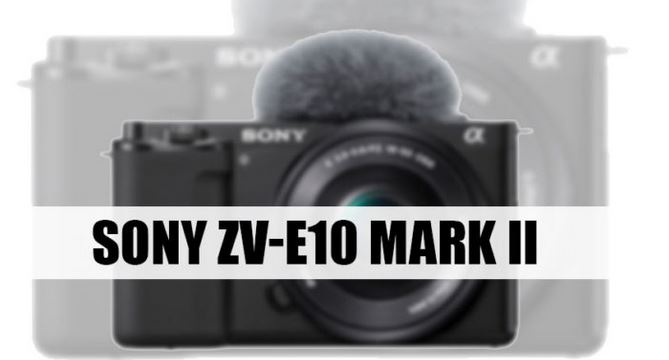
According to the latest rumors from the rumor mill, the Sony ZV-E10 camera is delayed. Sources of the rumor mill, suggest that it will be available in August 2024.
— End of rumor —
This is not the first time this year that there has been a delay; the announcement of the 16-25mm G was also delayed by over a month. This lens was supposed to be announced at the end of February but was delayed until mid-April. The 85mm GM II is still scheduled to be released in June, but it is unclear when the 24-70mm F2.0 will be announced. This lens was supposed to be released in early summer.
Rumors about the ZV-E10II have been circulating for quite some time, but it seems it will still be a while before it is announced. The Z6III and EOS R5 Mark II have also arrived much later than originally rumored, so each company may be taking some time to comply with EU regulations, why Fuji is out of the race since they are not using AI algorithms like Canon, Nikon, and Sony in their cameras.
Further added, The EU’s AI laws seem to be quite strict. Japanese companies are forced to do a considerable amount of work they have not done before, such as building schemes and publishing technical documents.
If this happens, it seems that there will be no withdrawal from the market, but since the maximum fine is 7% of annual sales, it is likely that the product will not be able to be released easily. In particular, it is expected that this will spread not only to the EU but also to North America and Asia in the future, so it is predicted that it will be difficult if proper measures are not taken here.
- 26MP Exmor R APS-C BSI CMOS Sensor
- BIONZ XR Image Processor
- Dedicated AI Chip / AI Auto framing and advanced AF modes
- UHD 4K 120p [crop] 4K 60p Uncropped / FHD 240p / 10-Bit 4:2:2
- Up to 11-fps Shooting, ISO 100-32000
- Real-Time Tracking AF for Stills & Video
- 759-Point Phase Detection, 93% Coverage
- S-Log3, S-Gamut3, S-Cinetone, User LUTs
- NO EVF – Same Body Desing as ZV-E10
- Internal Mic + Inputs, USB Streaming
- 3″ 1.03m-Dot Vari-Angle LCD Touchscreen
Price Sony ZV-E10 [Rumored Price approx]
- Price $798 [Bodly Only] | $899 With 16-50mm Lens | $1199 Creator Kit (Wireless grip + Shotgun Mic) | $1399 with 10-20mm Lens
Follow us on our social pages FACEBOOK | TWITTER | INSTAGRAM, If you have time –>see more Camera News and Sony Alpha Rumor
source SAR website
By admin, on May 20th, 2024
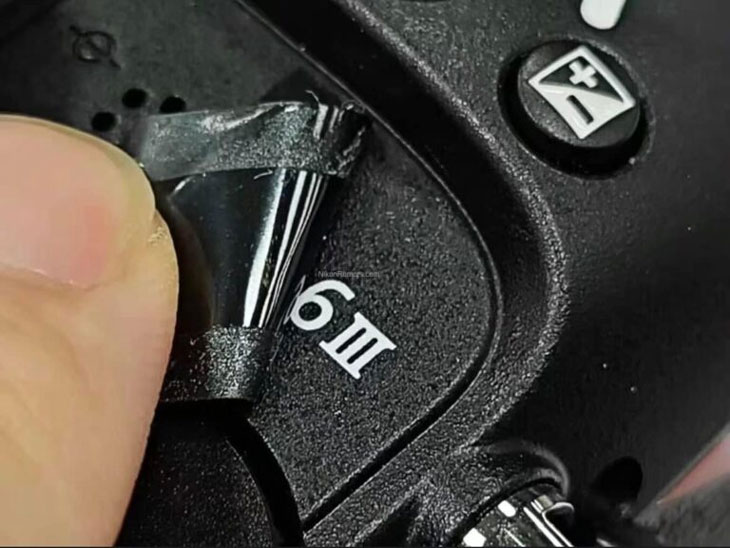
We have sorted out the list of Nikon cameras registered with the wireless certification agency, so in total we have FOUR registered cameras waiting to arrive in the year 2024. One of these cameras is without a doubt the Nikon Z6 Mark III, which is about to arrive soon within a matter of weeks. The next two cameras are unknown, but if you look at the details, it looks like they are also high-end cameras, not kind of entry-level, based on the initial wireless specifications they have on their registration page.

Nikon Z6 Mark III + 3 More ?
Among these two cameras, one can be the Nikon Z7 Mark III since, in general, we have seen that Nikon updates both cameras together. Hence, the Nikon Z6 Mark 3 is expected to arrive alongside the Nikon Z7 Mark 3.
The next camera, the third one, is completely unknown. A wild rumor has hit our mailbox that Nikon is also preparing to announce a direct competitor to the Canon R3 camera before the 2024 Olympics. This seems quite illogical to me since we already have the Z6 Mark 3 camera and the Z7 Mark 3. Expecting another high-end camera just after the announcement of the Z6 Mark 3 is unacceptable to me.
The Fourth one, again completely wild guess it’s the Nikon Z90, all the cameras we have discussed coming out from this list of Upcoming Nikon Cameras 2024
Registered Camera details



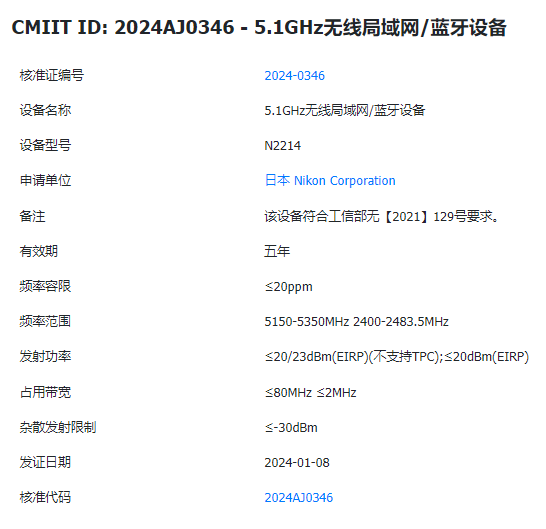
This post was first published on thenewcamera.com website
Follow us on our social pages FACEBOOK | TWITTER | INSTAGRAM to get live news + Nikon Rumors 24X7.
By admin, on May 18th, 2024
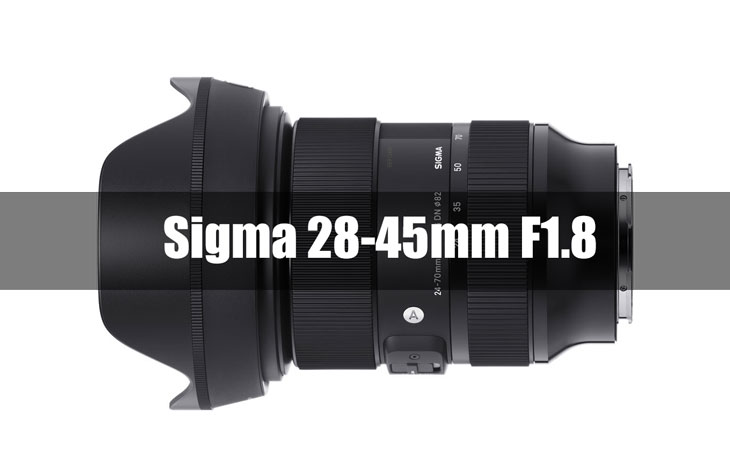
According to the latest rumors we have, Sigma is planning to announce a constant aperture zoom lens very soon for full-frame cameras, initially, it will be available for Sony E-Mount and L-Mount. The focal length of the lens is said to be 28 – 45 mm, and it will maintain a constant aperture of f/1.8 through the zoom range., so, that is an excellent move by Sigma, and I do hope and expect Tamron will also follow the same and soon announce some band new F1.8 Zoom Lenses for their FF Cameras.
Sigma was very popular with its APS-C DSLR lens, the 18 to 35 mm f/1.8, Let’s hope and expect after the announcement of the 28-45mm F1.8 Lens they should re-announce the same lens for Mirrorless mount too.
According to the information, the lens is specifically designed for video and content creation purposes as well as pro photographers, will you buy this lens let me know
also see – Sony ZV-E10 Mark II Specification
Follow us on our social pages FACEBOOK | TWITTER | INSTAGRAM, If you have time –>see more Camera News and Sony Alpha Rumor
source SAR Youtube
By admin, on May 15th, 2024
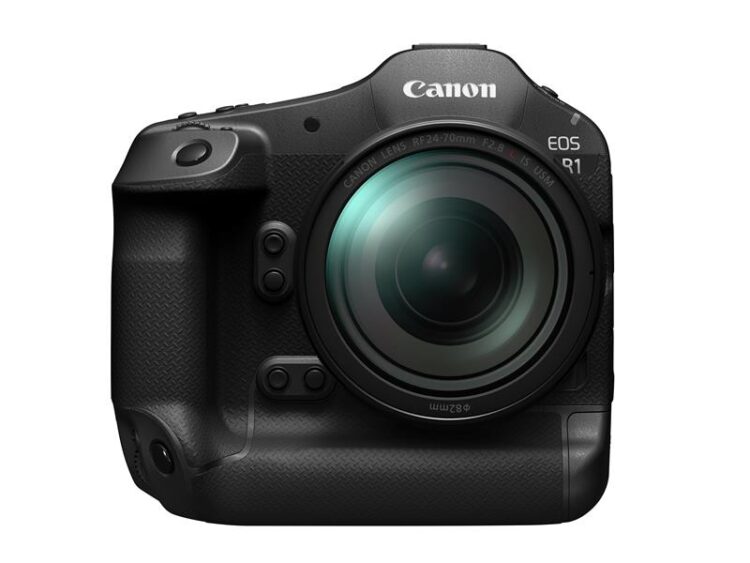
The Canon R1 flagship camera was finally announced today, it’s a development announcement so full specification sheet of the camera isn’t available, the only thing we have right now with us the official press release of the camera the Canon R1
Canon R1 Official Press Release
Melville, NY, May 15, 2024 (GLOBE NEWSWIRE) — Canon U.S.A., Inc. today announced that its parent company, Canon Inc. announced today that it is currently developing the EOS R1, a full-frame mirrorless camera, as the first flagship model for the EOS R SYSTEM equipped with an RF mount and is aiming for a 2024 release.
The EOS R1 is a mirrorless camera geared toward professionals that brings together Canon’s cutting-edge technology and combines top-class performance with the strong durability and high reliability sought in a flagship model. This camera will dramatically improve1 the performance of both still images and video and meet the high requirements of professionals on the frontlines of a wide range of fields including sports, news reporting, and video production.
This camera employs the newly developed image processor DIGIC Accelerator in addition to the pre-existing processor DIGIC X. The new image processing system, composed of these processors and a new CMOS sensor, enables large volumes of data to be processed at high speeds and delivers never-before-seen advancements in Auto Focus (AF) and other functions.
By combining the new image processing system and deep learning technology to an advanced degree, Canon has achieved high-speed and high-accuracy subject recognition. For example, subject tracking accuracy has been improved so that in team sporting events where multiple subjects intersect, the target subject can continually be tracked even if another player passes directly in front of them. In addition, the AF “Action Priority” function recognizes subject movement by rapidly analyzing the subject’s status. In moments during a sports game when it is difficult to predict what will happen next, this function automatically determines the player performing a certain action, such as shooting a ball, as the main subject and instantly shifts the AF frame, thereby helping to capture decisive moments of gameplay.
The combination of the new image processing system and deep learning technology will help to improve image quality. Canon implements the image noise reduction function, which has been previously developed and improved as part of the software for PCs, as a camera function to further improve image quality and contribute to user creativity.
Canon is working on field tests for this camera and will support capturing definitive and impactful moments at international sporting events to be held in the future.
Going forward, Canon will continue to expand the EOS R SYSTEM lineup of fascinating cameras and RF lenses, thereby continuing to meet the demands of a wide range of users and contribute to the development of photography and video culture.
By admin, on May 14th, 2024

Nikon UK Professional Services will hold an event in June 2024, the event start date is May 29th. Website NikonRumor speculates that the rumored Nikon Z63 camera may be introduced at the event.
– End of Rumor –

When Nikon Z6 III it will arrive?
According to Chinese source Ma. Nikon is not expected to release the Z63 camera in May. The earliest possibility for the release of the Z63 is the end of June or even later. This is because Nikon’s financial report is currently in good condition, and there is no immediate need to launch the new Z63 camera to stimulate the market. In addition, the main focus of Nikon’s new product tasting event this month is still the Z8 camera, and the next new product tasting event will not be until July.
What we have posted about Nikon Z6 Mark III
Nikon Z6 III released as scheduled – The following set of information coming out from the trusted source E8M_8888.
Many dealers have said that they are sure not to release it in May.
period =its month =July 2024
That’s all the update we have related to the Nikon Z6 Mark III
— ENd of rumor —
Nikon Z6 III Got Wireless Certification in January month and as usual Camera makers take roughly 3 Months of time of release their registered product, but Nikon Z6 III has now registered for more than three months, Let’s hope to see the camera on or before July 2024.
Follow us on our social pages FACEBOOK | TWITTER | INSTAGRAM to get live news + Nikon Rumors 24X7.
source – webio | NR.com
|
KEEP THIS BLOG ALIVE - Support New Camera Buy Canon Lenses, Buy Music CD or Digital Camera at amazon it helps this site, and you do not pay anything extra, it is just a way to help support this site.

|


















